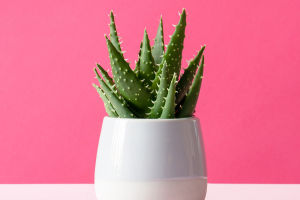When you think of a pencil, you probably imagine a simple tool used to jot down notes or sketch drawings.
Yet, behind this humble writing instrument lies a fascinating history, innovative design, and surprising versatility that most people never think about.
In this article, we'll uncover some surprising facts about pencils, from their ancient origins to modern uses, and even some quirky trivia along the way.
The Origins of the Pencil
The pencil as we know it today has been around for centuries, but its story started long before modern times. The earliest forms of the pencil can be traced back to the ancient Romans, who used metal rods, known as "styluses," to write on papyrus. However, the first true pencil appeared in the 16th century in England when a large deposit of graphite was discovered in Borrowdale. At the time, graphite was mistaken for lead, and this is why we still refer to the pencil's core as "lead" even though it's made of graphite.
The Perfect Mix: Graphite and Clay
You may wonder how a pencil can write so smoothly. The answer lies in a clever mix of materials: graphite and clay. The more clay that is mixed with the graphite, the harder the pencil lead becomes, which is why pencils are graded with numbers and letters. A #2 pencil, for instance, has a balance between softness and hardness, making it ideal for writing and standardized tests. Want a softer, darker line? Go for a "B" pencil. Need a fine, light line? Try an "H."
Drawing Basics: Understanding Pencil Grades
Video by Leanne Bishop
Pencils in Space?
You might think that astronauts use pens in space, but pencils have long been a preferred tool in zero gravity. Early space missions equipped astronauts with mechanical pencils because they didn't rely on gravity for ink to flow like a pen does. However, graphite fragments could pose a hazard in a zero-gravity environment, so eventually, space pens were developed that work even without gravity. Still, pencils were the first writing instruments to journey to space!
How Many Words Can a Pencil Write?
It's hard to believe, but a standard pencil can write around 45,000 words or draw a continuous line up to 35 miles long. That's a lot of writing! This fact may be surprising to many, as we often don't think about the longevity of something as simple as a pencil. Additionally, the average pencil can be sharpened about 17 times before it's too short to use comfortably.
The Iconic Yellow Color
Have you ever wondered why most pencils are yellow? This tradition started in the 1890s when the world's best graphite came from China. Pencil manufacturers started painting their pencils yellow to signal to consumers that their pencils contained high-quality Chinese graphite. The color yellow was associated with royalty and respect in China, making it a perfect choice to communicate the premium quality of the product.
Pencils and Erasers: A Perfect Match
Most pencils come with an eraser attached, but this wasn't always the case. In fact, pencils were originally sold without erasers. It wasn't until 1858 that the first pencil with an eraser attached was patented by an American named Hymen Lipman. Though this was seen as a convenient solution for correcting mistakes, not all pencils come with erasers today—many artists prefer pencils without erasers, so they can choose the eraser best suited for their specific medium.
Pencils: Not Just for Paper
Pencils aren't just for writing; they're also an artist's best friend. From intricate sketches to full-scale masterpieces, artists rely on pencils for their versatility and precision. Some artists create hyper-realistic drawings that resemble photographs—all with just a pencil. Pencils are also used in carpentry and construction because they can be marked on materials like wood and concrete.
Eco-Friendly Pencils
Today, with growing concerns about sustainability, pencils have become more eco-friendly. Some pencils are now made from recycled materials like old newspapers, and there are even plantable pencils! Once you've used up the pencil, you can plant it, and it will grow into herbs, flowers, or even vegetables. It's a clever way to reduce waste and give back to the environment.
From their ancient beginnings to their modern-day uses, pencils have played a surprisingly significant role in history and continue to be an essential tool in our everyday lives. Whether you're a student, artist, or space traveler, pencils are a simple yet powerful tool that transcends time and culture.


